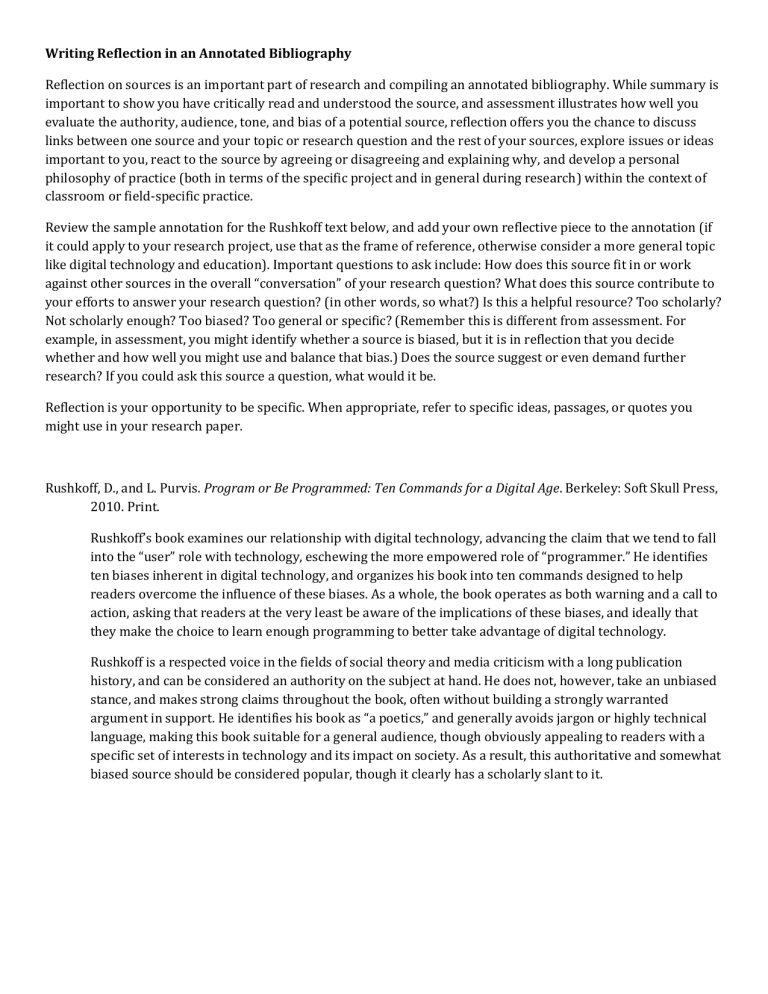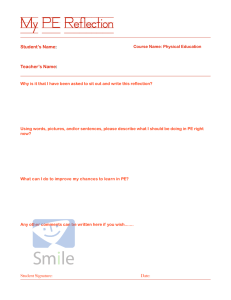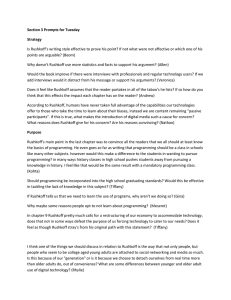Writing Reflection in an Annotated Bibliography

Writing Reflection in an Annotated Bibliography
Reflection on sources is an important part of research and compiling an annotated bibliography. While summary is important to show you have critically read and understood the source, and assessment illustrates how well you evaluate the authority, audience, tone, and bias of a potential source, reflection offers you the chance to discuss links between one source and your topic or research question and the rest of your sources, explore issues or ideas important to you, react to the source by agreeing or disagreeing and explaining why, and develop a personal philosophy of practice (both in terms of the specific project and in general during research) within the context of classroom or field-specific practice.
Review the sample annotation for the Rushkoff text below, and add your own reflective piece to the annotation (if it could apply to your research project, use that as the frame of reference, otherwise consider a more general topic like digital technology and education). Important questions to ask include: How does this source fit in or work against other sources in the overall “conversation” of your research question? What does this source contribute to your efforts to answer your research question? (in other words, so what?) Is this a helpful resource? Too scholarly?
Not scholarly enough? Too biased? Too general or specific? (Remember this is different from assessment. For example, in assessment, you might identify whether a source is biased, but it is in reflection that you decide whether and how well you might use and balance that bias.) Does the source suggest or even demand further research? If you could ask this source a question, what would it be.
Reflection is your opportunity to be specific. When appropriate, refer to specific ideas, passages, or quotes you might use in your research paper.
Rushkoff, D., and L. Purvis. Program or Be Programmed: Ten Commands for a Digital Age. Berkeley: Soft Skull Press,
2010. Print.
Rushkoff’s book examines our relationship with digital technology, advancing the claim that we tend to fall into the “user” role with technology, eschewing the more empowered role of “programmer.” He identifies ten biases inherent in digital technology, and organizes his book into ten commands designed to help readers overcome the influence of these biases. As a whole, the book operates as both warning and a call to action, asking that readers at the very least be aware of the implications of these biases, and ideally that they make the choice to learn enough programming to better take advantage of digital technology.
Rushkoff is a respected voice in the fields of social theory and media criticism with a long publication history, and can be considered an authority on the subject at hand. He does not, however, take an unbiased stance, and makes strong claims throughout the book, often without building a strongly warranted argument in support. He identifies his book as “a poetics,” and generally avoids jargon or highly technical language, making this book suitable for a general audience, though obviously appealing to readers with a specific set of interests in technology and its impact on society. As a result, this authoritative and somewhat biased source should be considered popular, though it clearly has a scholarly slant to it.


